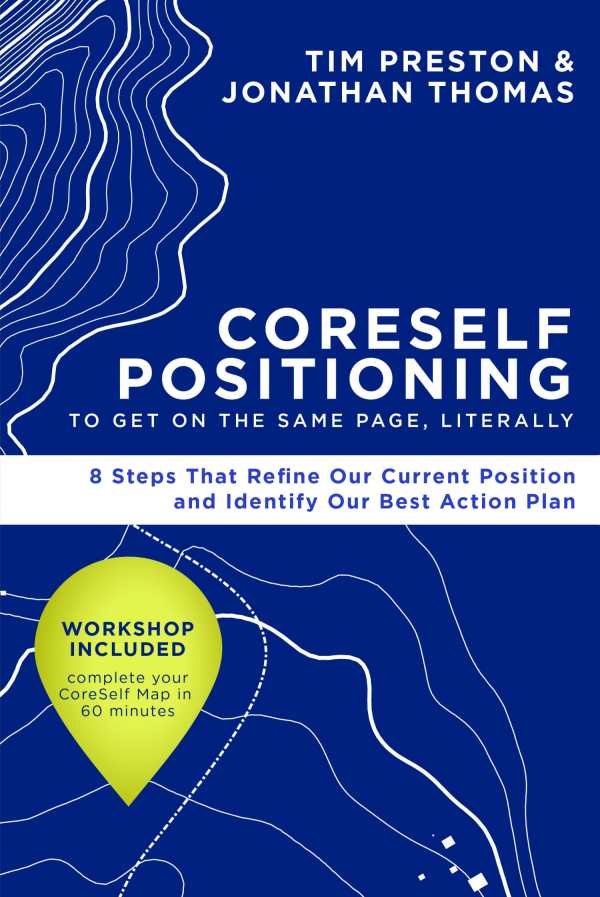CoreSelf Positioning to Get on the Same Page, Literally
8 Steps That Refine Our Current Position and Identify Our Best Action Plan
Encouraging “independent mastery of self” through nuanced individual assessments, CoreSelf Positioning is a thorough self-help guide.
Tim Preston and Jonathan Thomas’s comprehensive self-help book CoreSelf Positioning is about intentional introspection for personal and professional improvement.
This guide introduces CoreSelf Mapping, an eight-step evaluative process that encourages an “independent mastery of self” through an individual assessment of where someone is in their life and where they want to be. That mapping forms the foundation of CoreSelf Positioning, which scales the program to the organizational level for improved professional and personal relationships through self-reflection with others.
Though the book is organized into five parts, its Mapping, Positioning, and Journaling sections prove most central. In particular, the eight steps that make up Mapping are covered in considerable detail: Each receives its own chapter, fleshed out with with clear examples and explanations. Though the messaging is redundant, it is also effectual, reinforcing guiding principles and making room to develop each step’s reasoning in full. As an example, the top left circle, Respect, encourages recognition of one’s values through clear definitions of one’s concepts of health, creativity, and spirit.
Arguing throughout that people can find their proper purpose and life direction by developing their “Internal Observer and Navigator” using the one-page CoreSelf Mapping worksheet and training on two key questions (“Where am I?” and “Where do I want to be?”), the book cites personal examples to support its claims. Preston’s application of the journaling practice, for example, is dissected to illustrate growth. References to the wisdom of Maria Montessori, Albert Einstein, and Stephen Covey are also made, though these prove more superfluous to the book’s arguments. Further, the expansive background identifying the book’s grounding psychological patterns, feelings, and actions is sometimes excessive.
For maximum accessibility and applicability, the book balances its narrative explanations with visual explanations to suit different learning styles. Graphics and charts augment the text, as with the triangles that depict the CoreSelf Positioning concept of one’s relationship to others and images of completed CoreSelf mapping worksheets. For advanced practitioners, expanded user guides accompany each section. Elsewhere, examples at personal and professional levels are used to uphold the book’s claims. For instance, slowing down to activate the mind’s monitoring function is illustrated via a graphic that puts considerations of career changes at different life stages into perspective.
With access to the worksheet that makes its advice immediately applicable, CoreSelf Positioning is a detailed self-help guide that leverages introspection for personal and professional growth.
Reviewed by
Katy Keffer
Disclosure: This article is not an endorsement, but a review. The publisher of this book provided free copies of the book and paid a small fee to have their book reviewed by a professional reviewer. Foreword Reviews and Clarion Reviews make no guarantee that the publisher will receive a positive review. Foreword Magazine, Inc. is disclosing this in accordance with the Federal Trade Commission’s 16 CFR, Part 255.

